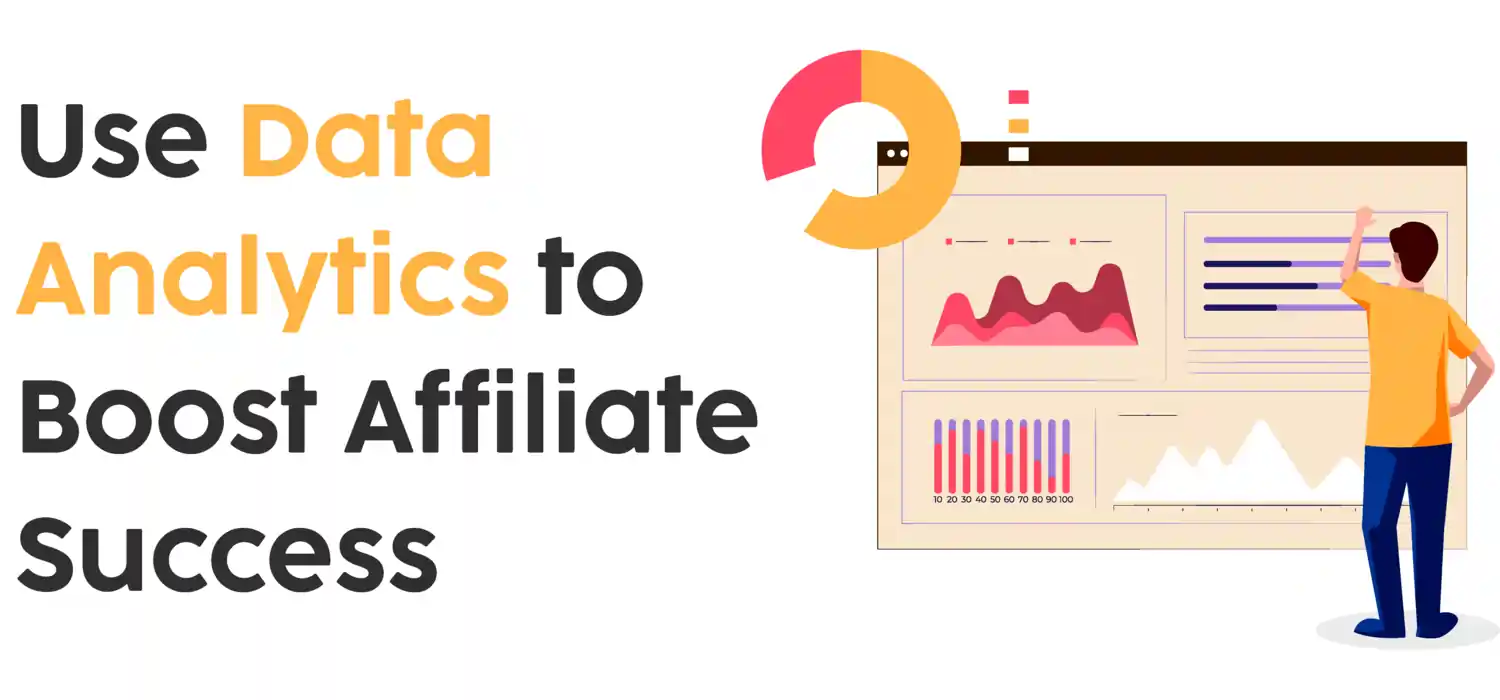Data analytics helps you understand which affiliate strategies work best by tracking clicks, conversions, and customer behavior. By analyzing this data, you can optimize your campaigns, focus on top-performing channels, and increase overall affiliate revenue
Highlights
An enthusiastic developer and skilled business management expert with over a decade of experience in the field

In the competitive world of affiliate marketing, data analytics has arisen as a powerful tool for improving performance and revenue. By leveraging data effectively, affiliates can identify trends, optimize strategies, and make informed decisions that lead to better results. In this article, we will explore how to use data analytics to improve your affiliate performance, focusing on user-friendly approaches and practical steps.
Affiliate marketing involves promoting services or products and earning a commission for every sale generated through your efforts. With the entire quantity of statistics available, understanding how to research and use this fact can significantly affect your success.
Data analytics helps you understand client behavior, track campaign performance, and make data-driven decisions. It allows you to see what strategies work and what doesn’t, providing you with a clearer photo of your affiliate business.
At its core, data analytics is about collecting, processing, and analyzing data to find useful insights. Here are some important ideas:
Before diving into information analytics, it’s important to establish clear desires for your affiliate marketing efforts. Ask yourself questions like:
By defining your objectives, you can focus your facts analysis on metrics that count most for your business.
To effectively analyse statistics, you need the right tools. Different software options are to be had that will help you manage and analyze your records. Here are a few tips:
This type of software helps track affiliate links, monitor conversions, and analyze performance metrics. Popular options include:
Data analysis tools allow you to process and interpret data efficiently. Consider using:
Customer Relationship Management (CRM Software) is important for dealing with your leads and customer interactions. It allows you to track purchase behaviorour and preferences. Popular CRM options include:
Once you have selected your tools, it’s time to start analyzing your data. Here are some key areas to focus on:
Understanding your website traffic is key to improving your affiliate performance. Use tools like Google Analytics to track the following:
Conversion rates show how many visitors take the desired action, such as purchasing through your affiliate link. To improve this metric:
Keep a close eye on the performance of particular affiliates. This includes tracking metrics like:
With your data analysis in hand, it’s time to optimize your strategies. Here’s how:
Your content plays a significant role in attracting and converting visitors. Use data insights to:
Data analytics can assist you refine your user targeting. Use demographic and behavioral data to:
Improving user experience can lead to higher conversion rates. Use data insights to:
Regularly assessing your performance is vital for ongoing improvement. Set up a schedule to review your data and results, and ask yourself:
Identify the KPIs that matter most for your affiliate marketing. Common KPIs include:
Data analytics is an ongoing process. As market trends change and new tools become available, it’s essential to keep learning and adapting your strategies. Here are some tips:
Keep an eye on the latest trends in affiliate marketing and data analytics. Subscribe to industry newsletters, attend webinars, and participate in forums to stay informed.
Don’t be afraid to try new approaches based on your data analysis. Experimentation can lead to unexpected insights and better results.
Regularly seek feedback from your audience. Understanding their needs and preferences can help you refine your strategies and improve your performance.
Using data analytics effectively can significantly increase your affiliate performance. By understanding your audience, monitoring relevant metrics, and optimizing your strategies, you may make knowledgeable selections that lead to multiplied revenue. Remember to pick the proper equipment, examine your statistics constantly, and adapt your methods as wished. With a strong statistics-pushed method in the region, you’ll be sufficiently on your way to reaching your associate advertising and marketing goals.
In today’s digital landscape, leveraging data analytics is important for improving affiliate marketing performance. At Digittrix, we specialize in creating advanced analytics solutions that help affiliates make informed decisions and optimize their strategies. Our services seamlessly integrate with your existing platforms, providing insights that drive results and improve conversion rates.
Data analytics transforms affiliate marketing by offering valuable insights into consumer behavior and campaign performance. Whether you want to refine your content strategy or track key performance indicators, our expert analysts can create customized data solutions tailored to your needs. With over 14 years of industry experience, Digittrix ensures your marketing efforts harness the latest advancements in data analytics.
Ready to boost your affiliate performance? Schedule a consultation with our expert analysts by calling +91 8727000867 or emailing digittrix@gmail.com for more information.

Do you need help in Security and Privacy?




Join over 1500+ businesses we've already helped!
Data analytics in affiliate marketing involves using data to analyze consumer behaviour, track campaign performance, and optimize strategies to improve conversion rates and overall marketing effectiveness.
Data analytics can provide insights into which strategies are working, identify trends, and highlight areas for improvement, allowing you to make informed decisions that improve your marketing efforts.
Key data types to analyze include traffic sources, conversion rates, customer demographics, click-through rates, and engagement metrics to better understand your audience and optimize campaigns.
Digittrix offers customized analytics solutions that integrate with your existing platforms, providing tailored insights and recommendations to help you maximize your affiliate marketing performance.

©2026Digittrix Infotech Private Limited , All rights reserved.